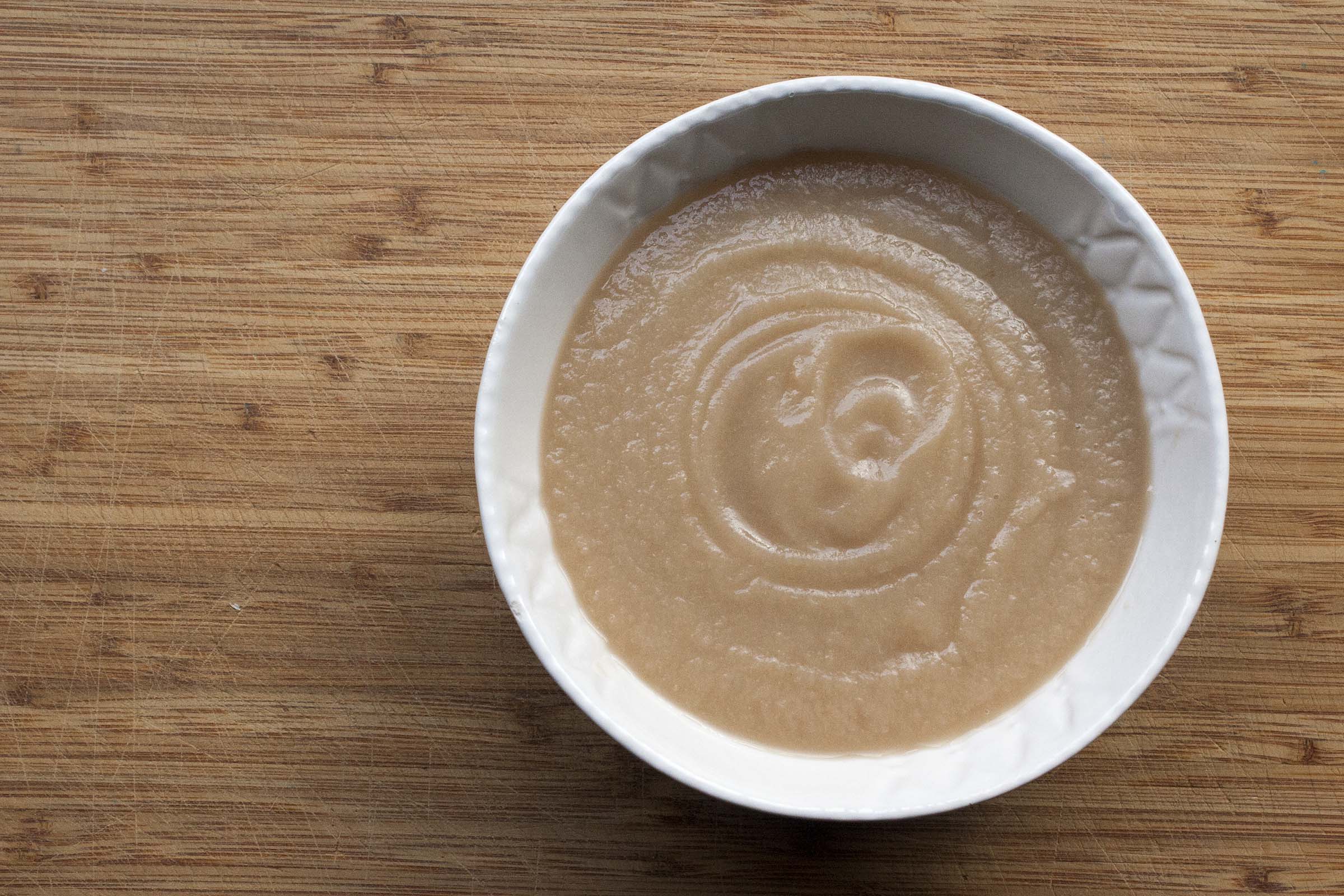 I have often told Larry that he doesn’t want to see what’s happening inside my head. Sometimes, it’s personal, and he wouldn’t want to hear it. But a lot of times, it’s one of those crazy crime scene boards, with pins, and strings connecting something on the left to another thing all the way on the right. It’s a questionable world in there. It’s also why, every time I look at pictures of this pear sauce, I think about sleep training.
I have often told Larry that he doesn’t want to see what’s happening inside my head. Sometimes, it’s personal, and he wouldn’t want to hear it. But a lot of times, it’s one of those crazy crime scene boards, with pins, and strings connecting something on the left to another thing all the way on the right. It’s a questionable world in there. It’s also why, every time I look at pictures of this pear sauce, I think about sleep training.
Look, I know. Sleep training is controversial — every parent has an opinion and a point to back up their thoughts. Here’s ours: we believe in it. Twice now, however, we have held off until the girls were old enough, and then dragged our feet for months, until it was the only option. And by only option, I mean, sleep train or walk around like angry zombies who are expected to function normally throughout the day. So, the only option.
But, just because you believe in something, does not mean that it’s easy. Sleep training, like all parenting, we realize again and again, is much more a test of the our fortitude, than the girls’. Everything we had to make happen (switching from bottles to sippy cups, transitioning out of the baby tub and even, playing alone) has been about us making the commitment, for better or worse. So, twice, we’ve sleep trained. Twice, the experience was nowhere near as bad as the mental lead up. And, twice, it’s paid off, for us and for them.
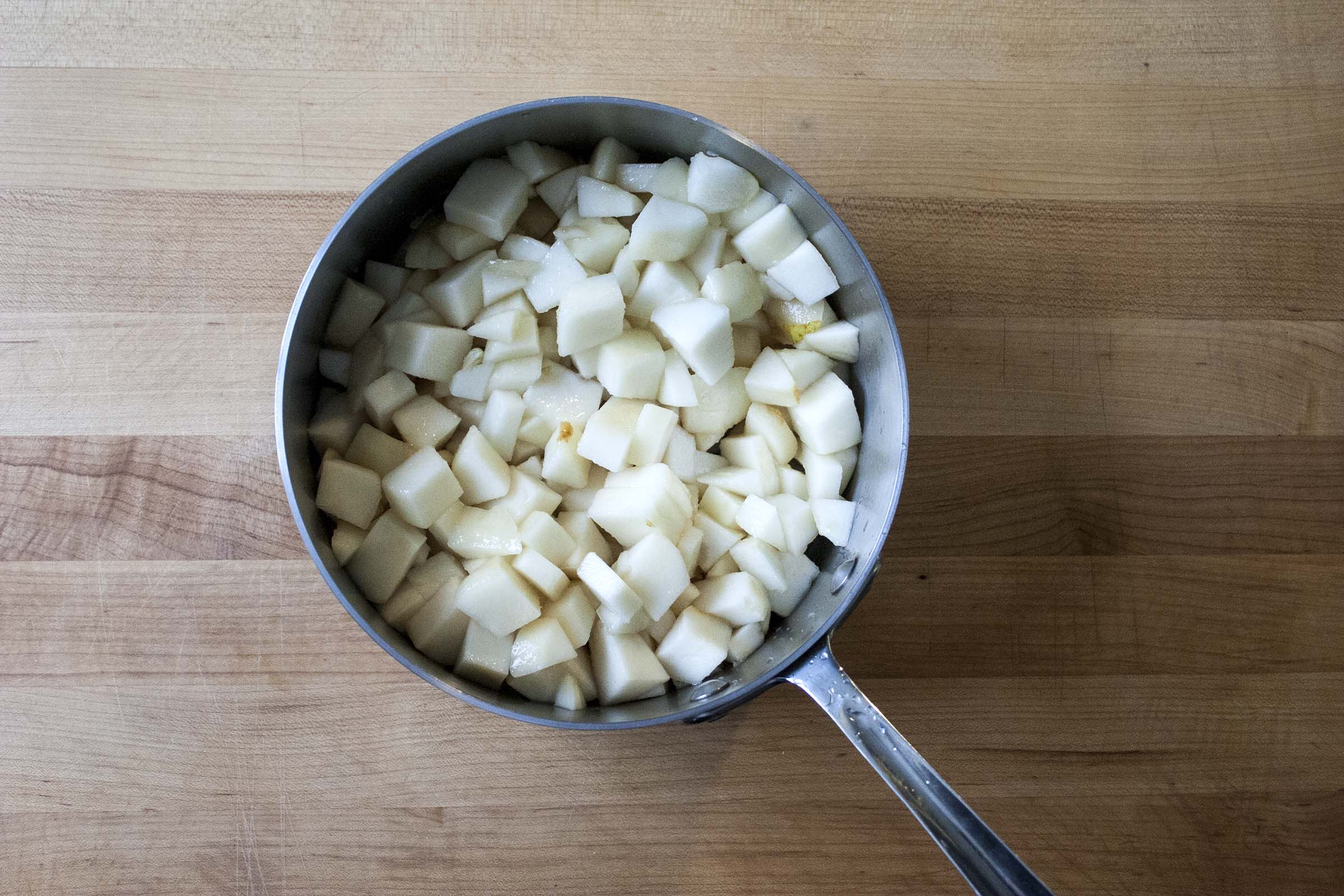 Sleep training is also why I had to make this pear sauce twice. The first time, it was during the first week that Reeve was, as I’ll call it, learning how to soothe herself. She was down for her afternoon nap. I was simultaneously peeling, simmering, straining, mashing pears, and setting the timer on the clock to check on her every three minutes, five minutes, seven minutes. This is a good time to say this: we may believe in sleep training, but it doesn’t mean that we’re immune to feelings as we listen to the girls whimper or can shut off our hearts. Every time I stopped to watch the monitor and every time I had to go back in there, it broke me a little more.
Sleep training is also why I had to make this pear sauce twice. The first time, it was during the first week that Reeve was, as I’ll call it, learning how to soothe herself. She was down for her afternoon nap. I was simultaneously peeling, simmering, straining, mashing pears, and setting the timer on the clock to check on her every three minutes, five minutes, seven minutes. This is a good time to say this: we may believe in sleep training, but it doesn’t mean that we’re immune to feelings as we listen to the girls whimper or can shut off our hearts. Every time I stopped to watch the monitor and every time I had to go back in there, it broke me a little more.
An hour later, she was asleep (and had been for some time) and I had pear sauce. I couldn’t quite remember how long it had taken to simmer or how much vanilla extract I had used. I remembered that I had planned to mash half and blend half to figure out which one I liked better. But, all of my energy had gone to Reeve and I couldn’t clean one more thing.
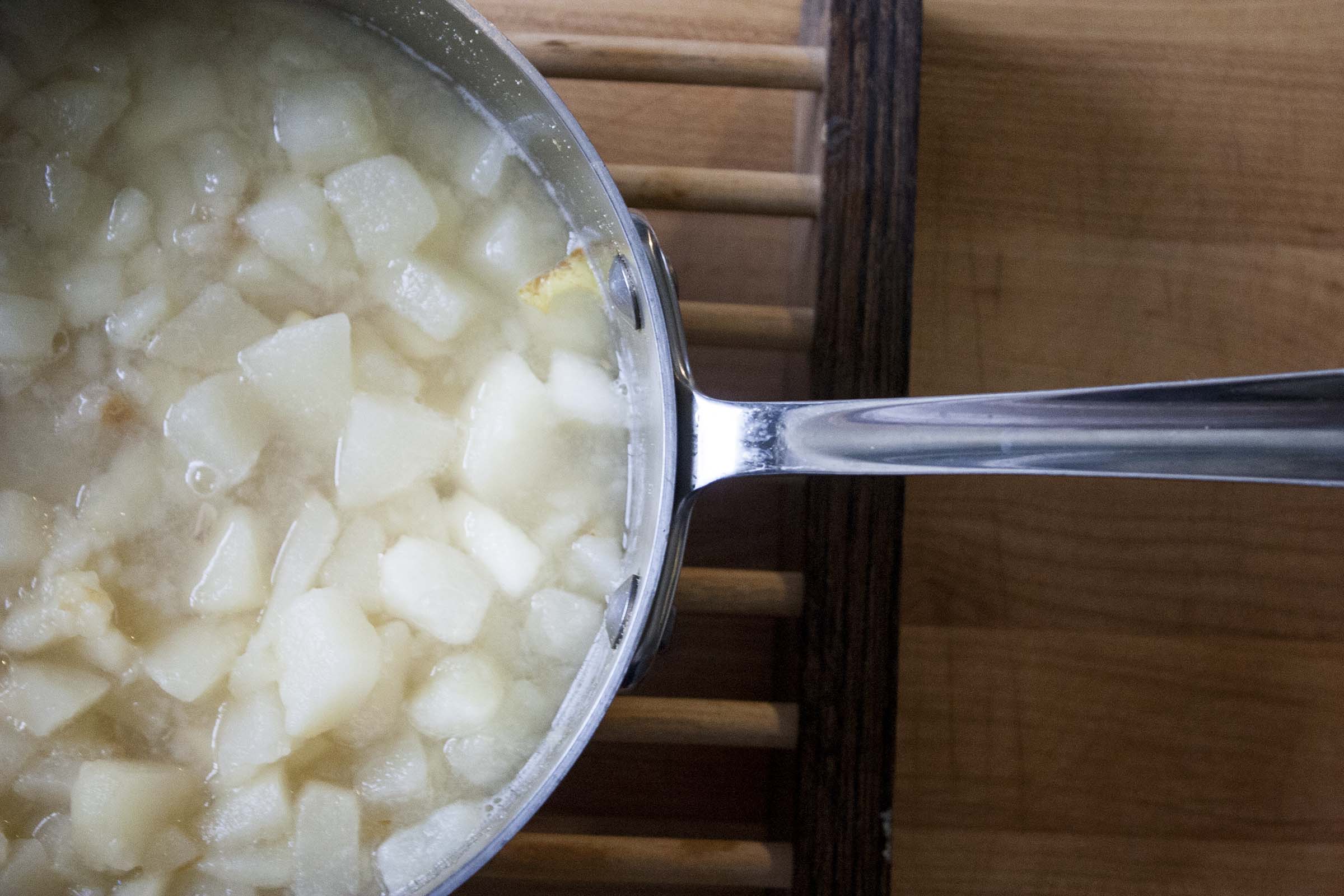 As the sauce cooled, I sat on the couch in semi-darkness, drinking the hot strained pear liquid, out of a mug, thinking about how everyone always says it’s easier the second time around. And, in some ways it is. This time, I didn’t stare in panic over a sleeping 1-week-old with hiccups. I drove with this one, by myself, when she was 4 weeks old. I didn’t sweat it, this time, when she didn’t smile the moment she turned six weeks.
As the sauce cooled, I sat on the couch in semi-darkness, drinking the hot strained pear liquid, out of a mug, thinking about how everyone always says it’s easier the second time around. And, in some ways it is. This time, I didn’t stare in panic over a sleeping 1-week-old with hiccups. I drove with this one, by myself, when she was 4 weeks old. I didn’t sweat it, this time, when she didn’t smile the moment she turned six weeks.
But, what “easier the second timers” leave out is this: you don’t love any less or hurt for them any less. The second (and I have to assume the third, fourth and fifth) is still your baby. And, even if you know that sleep training will be the best thing in the long run, even if you know it was one of the best things you did for your first daughter, it still hurts while you’re enforcing it. It still makes you lose focus and doubt yourself and wish that this was the baby who took care of it on her own, so that you didn’t have to subject either of you to the crying and doubting.
One week later, after three minutes of happily chatting with herself, Reeve was sleeping and I was staring at my Google Doc, channeling that day. How could I have left the vanilla out of the ingredient list? I can tell you the birthdays of most of the people I used to work with, over many different jobs, but I can’t remember how much vanilla I used only a couple weeks before? I know that I wanted it very, very vanilla forward and that I had added a bit more after the first pour. But what was that first pour? Could I really have used a full tablespoon of extract in one recipe?
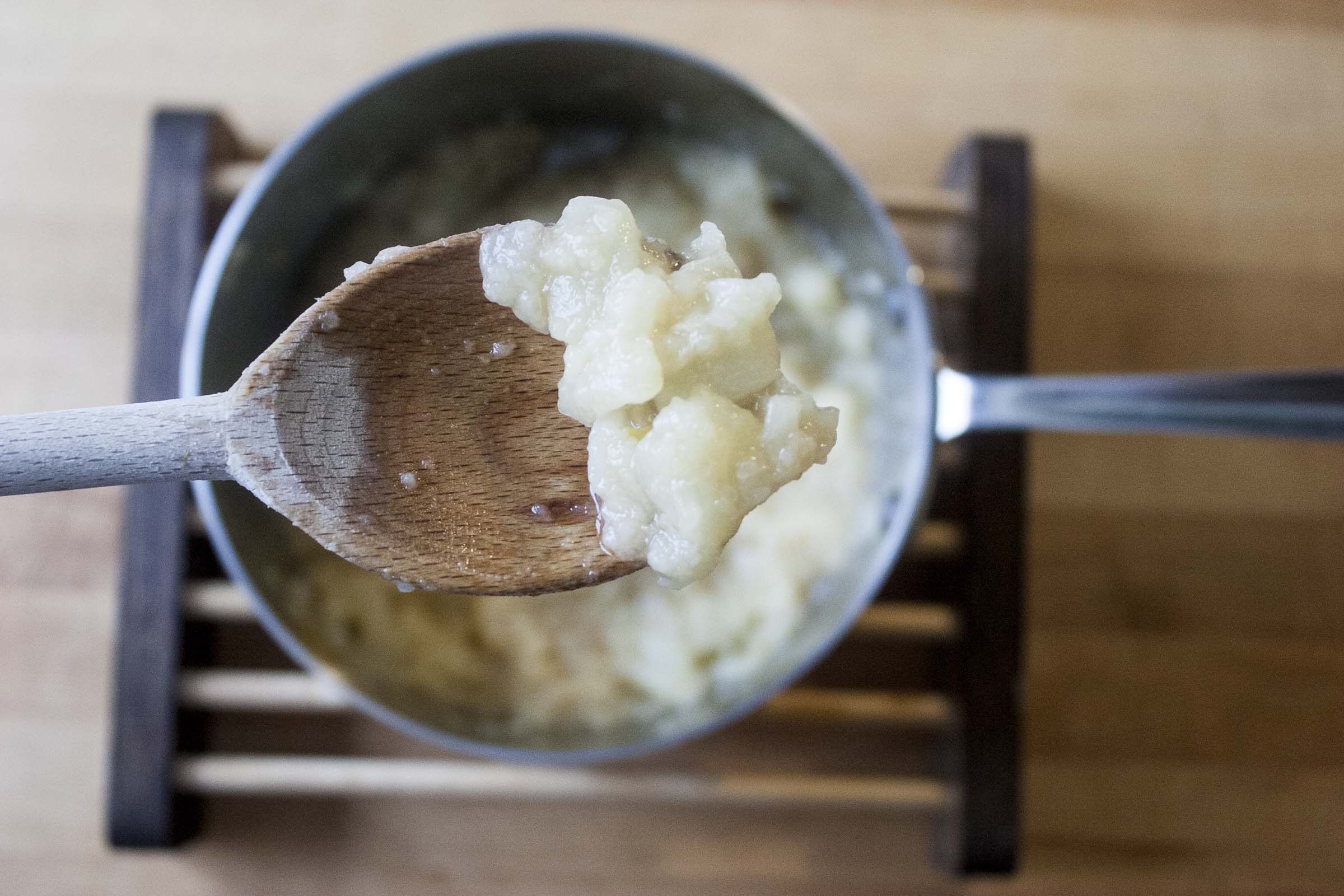 It turns out that I could. Over another week later, as Reeve took her morning nap, I peeled the second batch of pears, finally ripened. Easton scooped the cubes into the saucepot, we squeezed lemon over the lot and added a big splash of water. She was chatting about everything that popped into her head as I studiously kept an eye on the pears, making a note that their texture was perfect around the 15 minute mark.
It turns out that I could. Over another week later, as Reeve took her morning nap, I peeled the second batch of pears, finally ripened. Easton scooped the cubes into the saucepot, we squeezed lemon over the lot and added a big splash of water. She was chatting about everything that popped into her head as I studiously kept an eye on the pears, making a note that their texture was perfect around the 15 minute mark.
After the extra liquid was strained out, I decided to use the second batch to try a smooth version, before setting the mixture back on the stove. And, then, when the pear sauce simmered down, I added 2 teaspoons vanilla extract. I tasted it, and it was good, but too subtle. So, I just went for it: one more teaspoon. It was exactly the strong vanilla flavor I remembered.
And, that’s when I let myself see it. Sometimes, it does get easier the second time around. You just have to make it happen.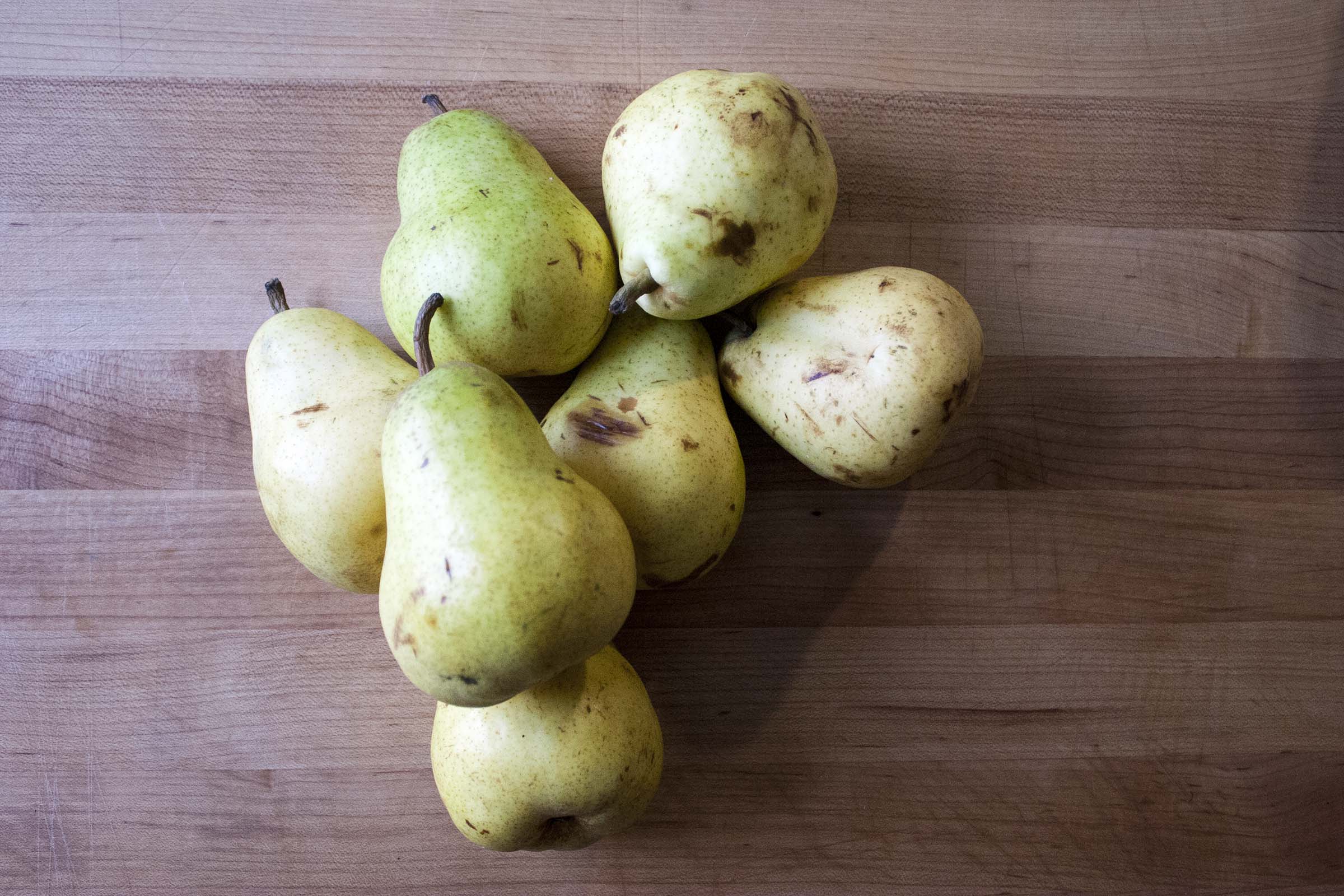
I've included options for both chunky and smooth sauces. I preferred the smooth, but enjoyed both. Something to keep in mind: sauces always appear thinner when warm. If you want to test this mixture, put a bit on a small plate and stick it in the fridge for a minute or two. You'll get a better gauge of the final texture this way.
- 4 pounds ripe Bartlett pears
- water
- ½ lemon, juiced
- pinch of kosher salt
- 1 tablespoon vanilla extract
- Peel and chop pears, working quickly to avoid browning. Fill medium saucepot with ½-inch water. Add pears, lemon juice and a pinch of salt, tossing to combine. Cover: bring to a boil over medium-high heat. Uncover; reduce heat to medium-low and simmer 10-15 minutes, or until cooked and completely soft.
- Place strainer over bowl; strain pears. Reserve pear juice for another use (you could bake with it, or do as I did twice: drink it very hot, in peace).
- For chunky pear sauce: return pears to saucepot. Using a potato masher, press to combine, leaving some pieces intact. Bring back to a boil and cook 10 minutes more, or until mixture thickens slightly, stirring often, making sure to scrape the bottom to prevent sticking.
- For smooth pear sauce: place strained pears in the blender. Let sit 10 minutes to cool. Place lid on blender and using a dishcloth, firmly hold down lid; puree until smooth (always use caution when blending hot liquids - they can easily push the lid off and the mixture out). Return to the saucepot. Bring to a boil; reduce to a slow simmer and cook 20 minutes, stirring often to prevent the bottom from sticking, or until thickened. (See tip above.)
- Remove from heat. Stir in vanilla extract. Let cool a bit before serving or completely before storing.
Leave a Reply